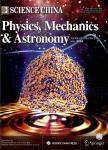Disorder driven superconductor-insulator transition in inhomogenous d-wave superconductor
Disorder driven superconductor-insulator transition in inhomogenous d-wave superconductor作者机构:Department of Physics Beijing Normal University
出 版 物:《Science China(Physics,Mechanics & Astronomy)》 (中国科学:物理学、力学、天文学(英文版))
年 卷 期:2016年第59卷第1期
页 面:86-91页
核心收录:
学科分类:080801[工学-电机与电器] 0808[工学-电气工程] 08[工学] 0805[工学-材料科学与工程(可授工学、理学学位)] 080502[工学-材料学] 0704[理学-天文学]
基 金:supported by the National Natural Science Foundation of China(Grant Nos.11174036 and 11474023) the National Key Basic Research Program of China(Grant Nos.2011CBA00108) the Fundamental Research Funds for the Central Universities
主 题:superconductor-insulator transition effect of disorder d-wave superconductor
摘 要:We study the effect of disorder on the superconductor-insulator transition in an inhomogeneous d-wave superconductor using the kernel polynomial method. As the Bogoliubov-de Gennes equations of the two-dimensional square lattice are solved self-consistently for the cases with more than 100000 unit cells, it is possible to observe the spatial fluctuations of the superconducting order parameters at the nanoscale. We find that strong spatial fluctuation of the superconducting order parameters can be introduced by disorder, and some superconducting specific order parameters are even enhanced. Moreover, we find that some isolated superconducting islands can survive the strong disorder, giving a boson insulator with some localized Cooper pairs. Our numerical calculations predict the existence of two sequential transitions with the increasing disorder strength: a d-wave to s-wave superconductor transition, and then an s-wave superconductor to insulator transition. The possibility of the appearance of a metallic phase between the superconducting and insulating phases is excluded by performing the lattice-size scaling of the generalized inverse participation ratio. In addition, we also discuss the effect of disorder on the optical conductivity of the d-wave superconductors.



